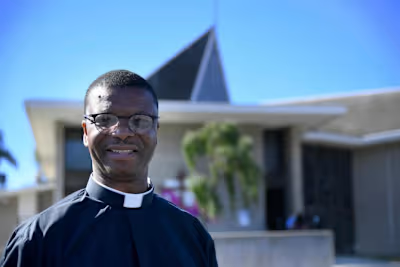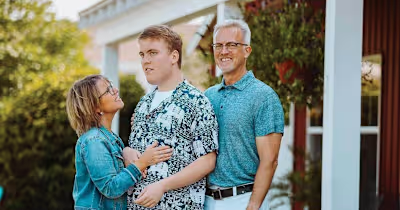Flag Bearers
Two Nicaraguans at Notre Dame carry on a courageous fight for justice in their homeland.
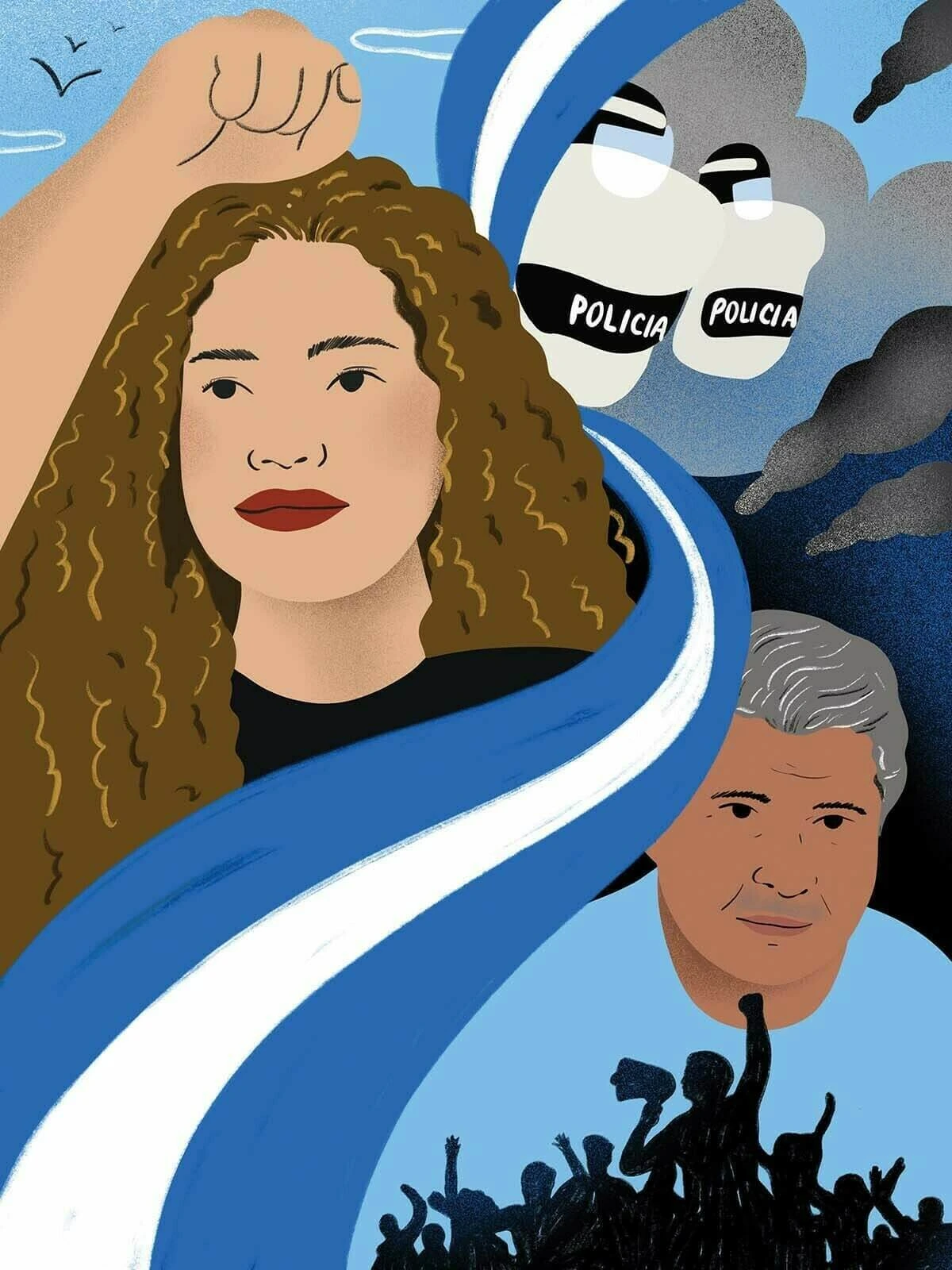
Fourteen-year-old Maria Fernanda Zamora was marching down the Carretera a Masaya, one of the main highways leading into Managua, the capital of Nicaragua. It was April 18, 2018, and the road was packed with children and senior citizens, men and women, the wealthy and the poor, all protesting recent decisions by the Nicaraguan government. The crowd was a sea of bright blue and white — the colors of the Nicaraguan flag adorning both the protesters’ clothes in celebration of their cause and their face masks, a universal precaution. Anonymity was a shield, and even at her age Zamora already knew better than to ask for other citizens’ names.
She defiantly wore a blue and white huipil, a traditional Central American dress, and tied her flag around her neck like a cape: an assertion of her patriotic pride and another act of resistance. A blue-and-white mask and sunglasses obscured her own face, and a crown of white and yellow sacuanjoche, the national flower, adorned her hair.
The protesters held signs decorated with Bible verses, historical slogans and pictures of the faces of people killed in earlier demonstrations, going back to 2014. Music blasted from speakers, blending with the chants of the crowd. Zamora’s father told her that while some chants were new, many were borrowed from the Nicaraguan Revolution, which had brought the country’s authoritarian president, Daniel Ortega, to his first term in power in the 1980s.
Zamora may not have known the names of protesters outside her family, but she felt a bond with them — a shared hope that tied them together.
Then, in an instant, it all shattered. The violence was sudden and terrible. Tear gas canisters exploded, and the sharp crack of gunfire tore the air. Chants turned to screams as the crowd splintered. People cowered in fear or snatched up their children and ran, desperate to escape.
Zamora watched in horror as the college-aged boy who had walked beside her for 10 miles collapsed as a bullet struck his head, the shot fired from a rooftop. Fear gripped her, and she fled with the rest of the crowd.
But Zamora ’25, then a high school student, would not be silenced by her fear.
An outcry against oppression
Protests against the Ortega government had begun in 2014 with scattered demonstrations, but in April 2018, they erupted into a nationwide movement. That year, proposed social security reforms — demanding more from workers while slashing their benefits — ignited widespread outrage in what was already one of the poorest nations in the Western Hemisphere.
The government’s response was swift and severe. As demonstrations continued, dozens of protesters were killed in the first week alone. Ortega scrapped his proposed reforms to appease the crowds, but the decision came too late — the movement had grown into a nationwide outcry against his regime.
Ortega had served a term as Nicaragua’s president from 1985 to 1990, after the revolution he helped to lead had toppled the government of Anastasio Somoza Debayle, whose family had ruled Nicaragua for 42 years. In 1990, discontentment with Ortega’s leadership — due to economic turmoil, the Contra War and allegations of authoritarianism — led to his peaceful electoral defeat. Since returning to power in 2007, though, he has dismantled democratic institutions, concentrated power, suppressed dissent and eliminated political opposition.
Today Ortega and his wife, Rosario María Murillo, govern the country as co-presidents. Together they have systematically eliminated checks on their power, an arrangement that Rachel Schwartz, an expert on Central American democracy and human rights and a visiting scholar at Notre Dame’s Kellogg Institute of International Studies, terms a “personalist dictatorship.”
Schwartz notes that Ortega’s grip on power didn’t begin with sweeping, authoritarian measures. Instead, he introduced small, subtle changes over time. “We see this kind of slow dismantling and erosion,” Schwartz says, “until there’s a kind of detonation, like we see in 2018, and then a swift crackdown that really leaves little doubt that this is, in fact, a dictatorship.”
The escalating violence became too dangerous for Zamora’s parents to risk taking her to any more demonstrations. The situation remains so dangerous today that she cannot reveal her parents’ names
or other details about her family. But she has wanted to fight for her country all along, and despite her parents’ pleas, she continued to take to the streets, pushing for the change in leadership she knew her country needed.
By the end of that wave of public protests on September 29, 2018, when Ortega declared protest itself illegal, more than 300 Nicaraguans had been killed by government forces and pro-regime militias — the bloodiest year in the country since the revolution’s last days in 1990. Thousands more were injured, and hundreds were detained, with many college students recounting beatings during their imprisonment.
Since then, according to the Congressional Research Service in Washington, D.C., more than 200,000 Nicaraguans have fled the country for political and economic reasons, seeking safety primarily in Costa Rica, other Latin American countries and the United States, and often forced to leave their families behind.
The outlawing of protest, like so many other changes, didn’t sit well with Zamora or her family. “Faith is the first driver in everything I do. That’s just the way I was raised. My parents are big believers . . . and I always try to put God in the center of every decision I make,” she says. Protesting “always felt like the right thing to do. I always knew whenever I went to a protest . . . it was a possibility that I’d never come back. But I felt that was a cause noble to die for.”
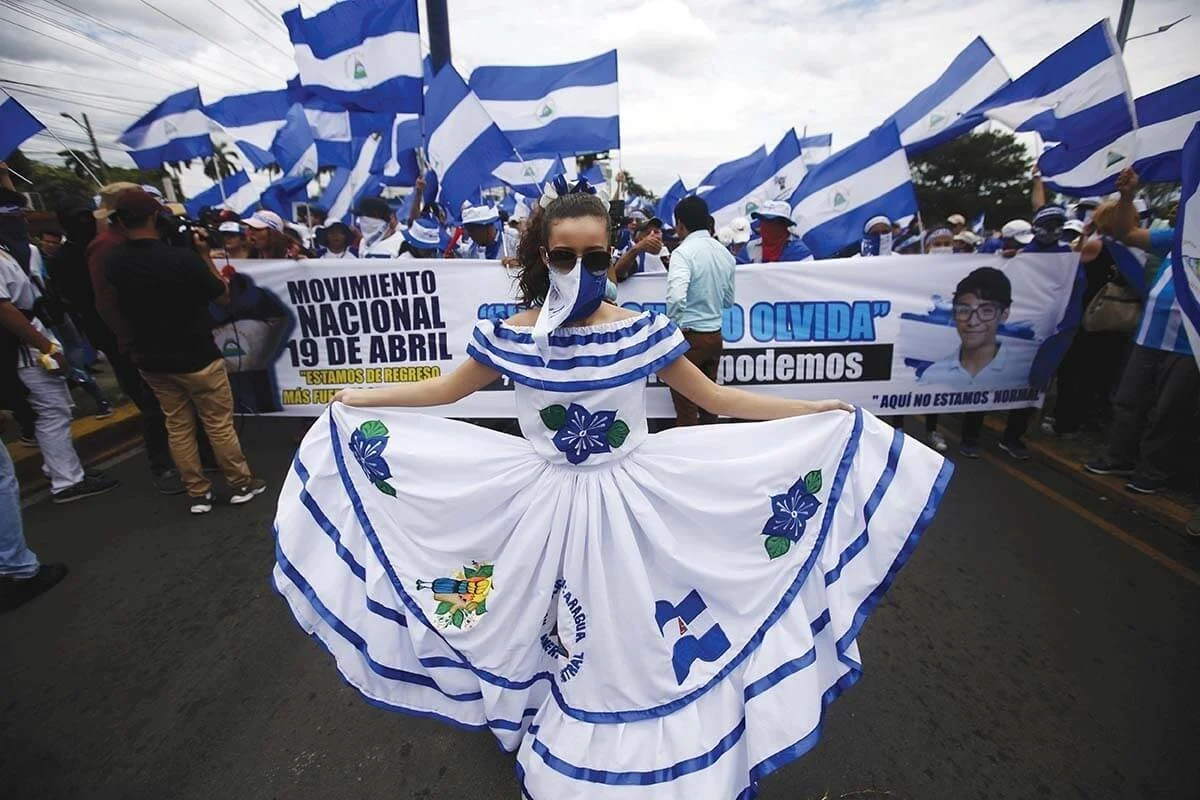
Rebellion through education
As Zamora began her sophomore year, she felt a growing determination to play a meaningful role in her country’s future. While she had the privilege of attending a private high school in Managua, she was deeply troubled by the struggles faced by public school students.
Public education was tainted by government propaganda, leading some parents to withdraw their children from school to shield them from indoctrination that promoted obedience to Ortega. Schwartz says that many teachers who refused to teach the propaganda were punished financially or harassed until they were forced to flee the country. Such measures only worsened Nicaragua’s already low literacy rate — the lowest in Central America. Meanwhile, limited resources meant few public schools offered English instruction, and some classrooms lacked even such necessities as desks and chairs for every student.
At age 15, Zamora founded an English club for public elementary school students, aiming to equip them with the opportunities that English proficiency provides — better economic prospects, access to higher education and the ability to engage with a wider supply of information on the internet. Soon, hundreds of kids had signed up for the Saturday classes, and several of Zamora’s peers had volunteered to teach them alongside her.
Their effort attracted the government’s attention. The Ministry of Education called Zamora, demanding she use a lesson book they would provide. The book’s cover featured a photo of Ortega and Murillo, then Nicaragua’s vice president. The textbook was filled with indoctrination tactics, prompting the memorization of phrases like “Daniel Ortega is the best president,” rather than teaching students how to use the language in daily life.
Using the text threatened to morph Zamora’s vision into something unrecognizable, pressuring her to reconcile her values with the realities of life under an authoritarian regime. She refused to do so, continuing to teach her own way. When government officials looked in through the windows of the school where the lessons took place, she pretended to use their books to avoid detection.
“It was scary,” she says. “I was playing with my life.”
The club persisted for three years. After Zamora left for college, the remaining student-teachers were afraid to continue to rebel against the ministry. Eventually they disbanded.
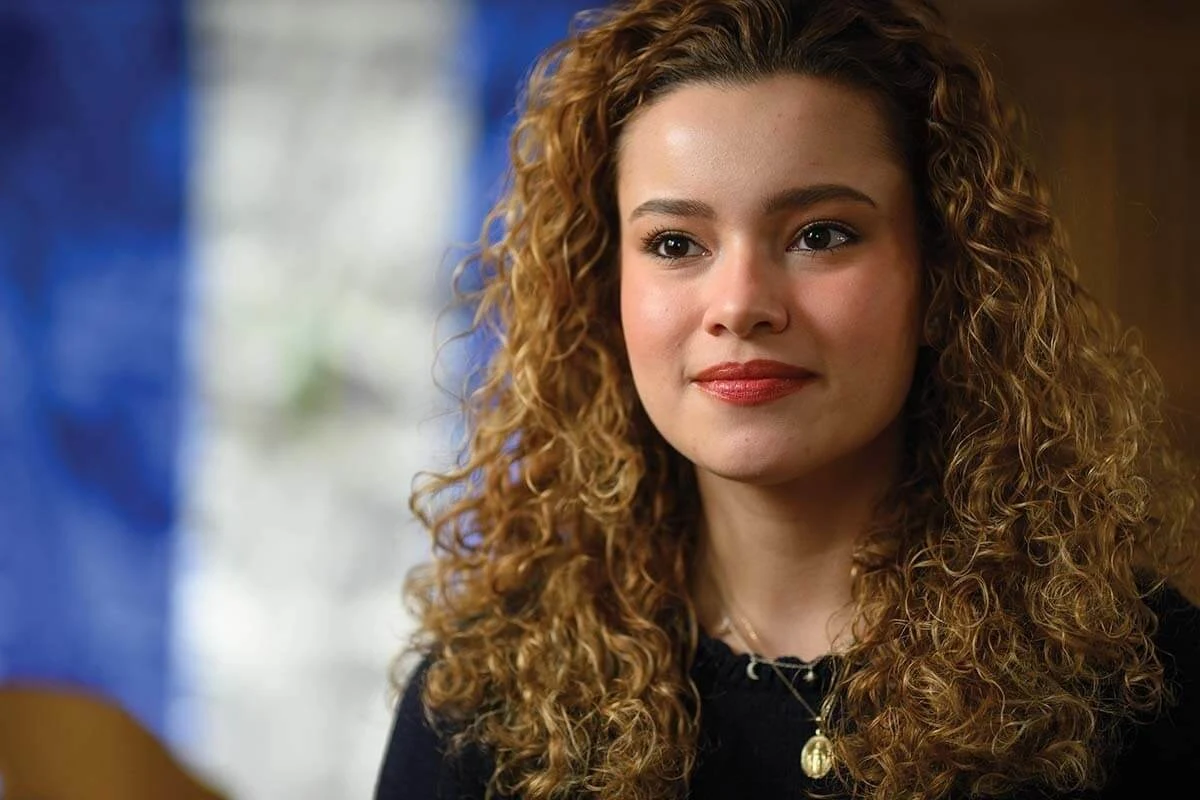
El presidente de los pobres
During her last year of high school, Zamora looked for other ways to help her suffering country. In 2020, she began to write for La Prensa, Nicaragua’s oldest newspaper, which now operates from Costa Rica after the editor’s imprisonment and the government’s confiscation of its headquarters.
Although independent journalism is not officially banned, Ortega’s regime suppresses it through intimidation and false legal pretexts such as accusations of tax evasion, allowing the government to maintain the illusion of press freedom while eliminating dissent. According to the Nicaragua-focused Foundation for Freedom of Expression and Democracy, the Ortega government has forced at least 278 journalists into exile since 2018. The pressure extends beyond journalists and to readers as well — authorities conduct random phone checks, and anyone found with a website like La Prensa in their browser history may be imprisoned.
Zamora’s articles appeared with her photo, and she used her real name in her byline despite the danger. In her first article, titled ironically in Spanish, “The ‘president of the poor,’” she highlighted the disconnect between Nicaragua’s minimum wage and the cost of living, arguing that poverty in the country — economic and intellectual — was getting worse; that lack of education, widespread indoctrination and fear had led to national stagnation.
“What is the purpose of living where there is no justice or education, and where there is no change?” she wrote. “Living tied hand, foot and mouth is what should provoke true fear. The blind fanaticism of the Orteguistas, the businessmen’s love of money, and indifference are what has allowed the so-called president of the poor to continue being a leader. As long as we do not change our mentality, educate ourselves in the truth and lose our fear, Nicaragua will not be free.”
The article resonated deeply with many readers, who found it online despite the threat of imprisonment. Zamora began contributing to La Prensa twice a month.
When the young journalist’s parents found out what she was writing, they begged her to stop. She didn’t.
A push for democracy
In 2021, Juan Sebastián Chamorro — an economist and businessman already under 24/7 surveillance and hailing from a family long involved in national politics and newspaper publishing — announced his intention to challenge Ortega for the presidency in the country’s upcoming general elections.
The move would cost Chamorro what remained of his freedom, eventually severing his contact with his wife and daughter, and putting them in constant fear for his life.
“The regime had complete control of the electoral process,” Chamorro said, sitting in his office in the Hesburgh Center, where he has spent two years as a visiting fellow at Kellogg. “The chances of electoral fraud were already high. So this is something — that particular question — we discussed a lot: What can we do in the face of the elections? Are we going to face an electoral fraud just waiting on the couch in our homes, or are we going to give a fight as democrats?”
That fight was short-lived. That spring, Ortega’s government began arresting politicians, journalists and campaign workers, citing “treason to the homeland” and thoroughly dismantling electoral competition before Ortega claimed his fifth term in office.
Officers of the national police came for Chamorro in the middle of the night on June 8. Having received a warning a few hours prior, he and his wife had sent their teenage daughter to stay with a nearby relative. The police beat him before taking him to El Chipote, a notorious prison where high-profile detainees endure harsh conditions, psychological torment and torture. They spent hours ransacking his house, searching for anything they could use against him in court, confiscating phones and computers and stealing valuables. Chamorro was the fourth person arrested in that particular crackdown, which rounded up hundreds of the regime’s political opponents.
In a modest effort at self-defense, Chamorro had hidden his real phone under the spare tire of his sister’s car during a recent visit, escaping the notice of the police who watched him. To mislead them further, he left an old burner phone on his desk. The police would later claim that the fake phone contained evidence of Chamorro’s recent correspondence with terrorist organizations, even though it hadn’t worked in years.
Meanwhile, convinced the government would try to capture her or confiscate her passport, Chamorro’s wife, Victoria Cardenas, fled. She traveled through the forest for hours under cover of darkness and took a boat up the San Juan River and across Nicaragua’s southern border into Costa Rica. Their daughter, Victoria Chamorro, born a U.S. citizen, flew directly to the U.S. from Managua’s international airport. Mother and daughter were soon reunited in Florida, forced to rebuild their lives after leaving everything behind.
The general election the following November returned Ortega to Nicaragua’s presidency with nearly 76 percent of the national vote. The U.S., the European Union and international human rights organizations condemned the election as a sham.
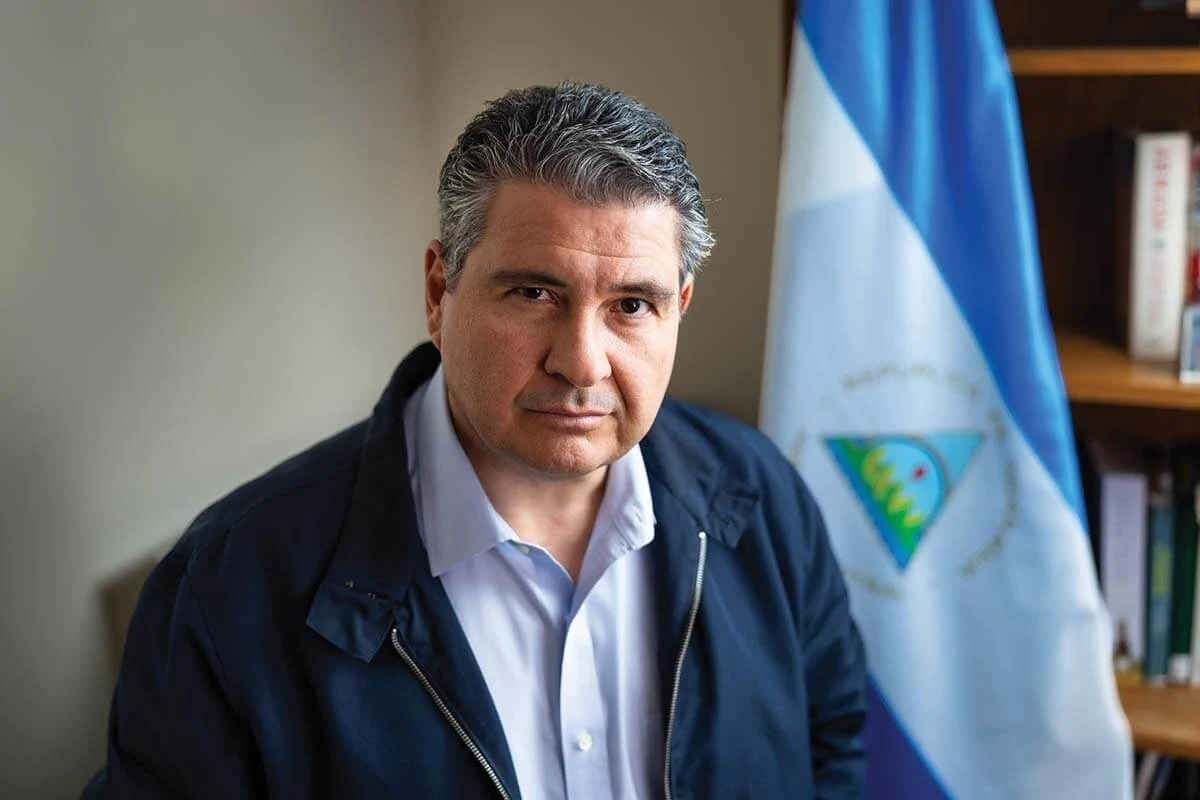
Moving toward hope
As Chamorro’s wife and daughter arrived in the U.S., Zamora and her family were planning their own escape.
The regime had taken notice of her writings for La Prensa, and her parents had been singled out for their involvement in the protests. Their property was vandalized — chilling threats appeared in red paint on outside walls. While other dissidents were being arrested and imprisoned for infractions against the government, the family rushed to the airport to fly to the U.S., even though Zamora’s parents and younger brothers did not speak English.
In the rush to leave, Zamora brought a small piece of home with her — the Nicaraguan flag, which was illegal to possess until the ban on it was lifted in August 2023. “You [could not] own Nicaraguan flags,” she explains. “The government has its own flag, and ever since 2018, if the police stop you — because they can stop and search through any car, and they do that constantly — if they stopped you and they saw you had a flag, you could instantly be in prison.”
Her mother begged her to leave the flag behind, to discard it so it could not be found, but Zamora’s flag was too important to her. She had taken it to every protest. Instead,
she rolled it up as tightly as she could, hiding it within a bag and inside a box, buried beneath clothes, praying her luggage wouldn’t be searched.
“[That flag] often feels like my only connection to those moments and to my country. It’s a reminder of everything I stood for and everything I carry with me, no matter where I am,” she says.
The flag remained hidden, and the family landed safely in the U.S. By fall, Zamora was a freshman at Notre Dame, acutely aware that the human rights abuses, economic hardship and political instability in her home country continued.
Reconnection
That September, Juan Chamorro was allowed a short visit from his sister, from whom he learned that his wife and daughter had escaped the country, and that his daughter had begun her first semester studying architecture at Notre Dame. His wife had settled in Houston, where they had family.
On his birthday in February 2022, Chamorro was subjected to a fake trial in which he was accused of “treason to the homeland.” He was sentenced to 13 more years in prison, where he had already suffered solitary confinement and other tortures.
“It’s a torture for the families as well,” he says of his political imprisonment.
He wouldn’t be allowed to speak to his family for almost 19 months. Then, on January 1, 2023, he was finally permitted a 10-minute video call.
Reunited via screens, they all cried. But the moment gave Chamorro hope that the government’s persecution was beginning to ease. That it had taken authorities so long to allow the family even that lone phone call, he says, violated the United Nations’ Mandela Rules — minimum standards for the treatment of prisoners — “and it’s a form of psychological torture. Even convicted criminals, common criminals, have the right to visit families and stuff. So I knew that by allowing all these things, the time of our liberation was approaching.”
He was correct. Chamorro was asleep one night when guards entered his cell and told him to put on his civilian clothes. He was released on February 9, 2023, after 20 months in prison. He boarded one of several buses with the other political prisoners. Among them were his cousins Cristiana Chamorro, a 2021 presidential candidate and vice president of La Prensa, and Juan Lorenzo Holmann, the newspaper’s general manager. They had no idea where the buses were headed until they arrived at an airport near the prison.
Each prisoner was given a choice: Board a plane to Washington, D.C. where you will be given temporary humanitarian parole, relinquishing all possessions, property, citizenship and any intention to return to Nicaragua, or remain in prison to serve out your sentence under the continuing threat of torture.
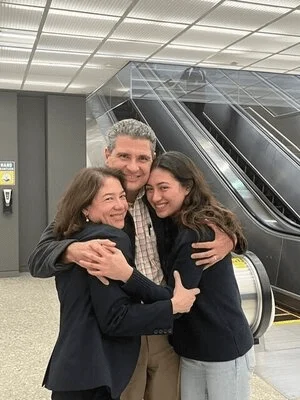
Many of the prisoners spoke little to no English. Choosing the flight also meant leaving family behind indefinitely. For Juan Chamorro, despite the prospect of living in exile, the choice was easy. He had attended college and graduate school in the U.S., and reunion with his own family meant everything. He signed the paperwork and boarded the plane to Washington Dulles International Airport.
The release followed negotiations between Nicaragua and the U.S. aimed at improving bilateral relations. Then-U.S. Secretary of State Antony Blinken characterized the result as “a constructive step towards addressing human rights abuses” and an open door “to further dialogue” between the two countries. In contrast, the Nicaraguan government asserted that the deportation was a measure to safeguard peace and national security, labeling the deportees as traitors permanently barred from holding public office. Should Chamorro return, it was clear he would be imprisoned or executed.
Kevin Sullivan was the U.S. ambassador to Nicaragua at the time and a family friend. He contacted Chamorro’s wife to let her know about the release. She called her daughter in the middle of the night to share the news. The next morning, after responding to a flood of messages, Victoria Chamorro booked a flight to join her parents in Washington, D.C.
The fight continues
Although Zamora, Chamorro and their families are removed from the turmoil in Nicaragua, they continue to grapple with the consequences of exile and the desire to see their country overcome its problems. In January 2025, Ortega’s continued rewiring of the Nicaraguan constitution received unanimous support in the National Assembly. One consequence, Murillo’s elevation to the co-presidency, further entrenches the family’s power by enabling her to assume control without an election if Ortega were to die.
For four years, the flag Zamora smuggled out of Nicaragua has hung above her bed in Cavanaugh Hall — a striking symbol of the country she loves.
Juan Chamorro displays his own blue and white flag in his campus office, a poignant reminder of the country from which he is exiled. He and his wife are co-authoring a book, Hope Amid Horror, about their experiences of Juan’s imprisonment. He hopes it will identify the historical events that led to Nicaragua’s long economic decline and explore how countries fall under a dictatorship like Ortega’s. “Leaving a testimony is extremely important,” he says. The official story is, “we are criminals. We are traitors to Nicaragua; we are agents of the imperialism of the U.S. and Europe. We’re enemies of the people. So, we need to impose our own narrative.”
He adds: “There are approximately one million political prisoners throughout the world. [Our book] is for the families of these prisoners to have a testimony that may be useful for them to get some practical advice of what to do and how to identify patterns. Dictators behave the same all over the place.”
In her fourth year at Notre Dame, Maria Fernanda Zamora is the vice president of the Notre Dame chapter of International Justice Mission, which advocates for people around the world who are silenced by political oppression, poverty and systemic inequality. She hopes to return to Nicaragua and shape a better future through politics or business. She will graduate in May with a degree in marketing and global affairs.
Zamora and Chamorro, though different in age and experience, are bonded by their commitment to resistance and resilience. The convergence of their paths at Notre Dame testifies to the unyielding spirit of those who refuse to surrender their hopes for their country’s future.
Michelle Cuneo is an associate editor of this magazine.
Like this project
Posted Apr 10, 2025
Two Nicaraguans at Notre Dame carry on a courageous fight for justice in their homeland.
Likes
0
Views
5



